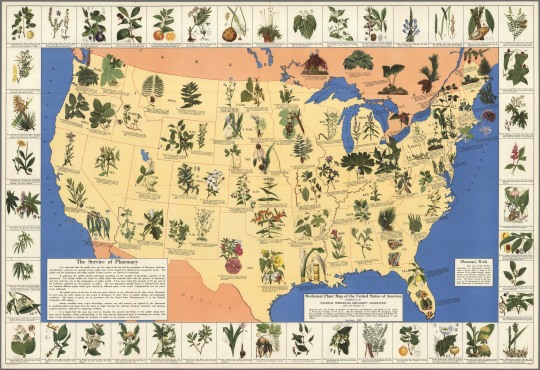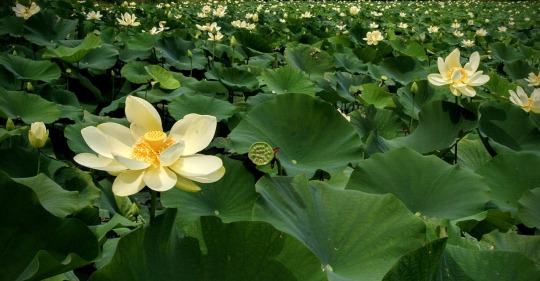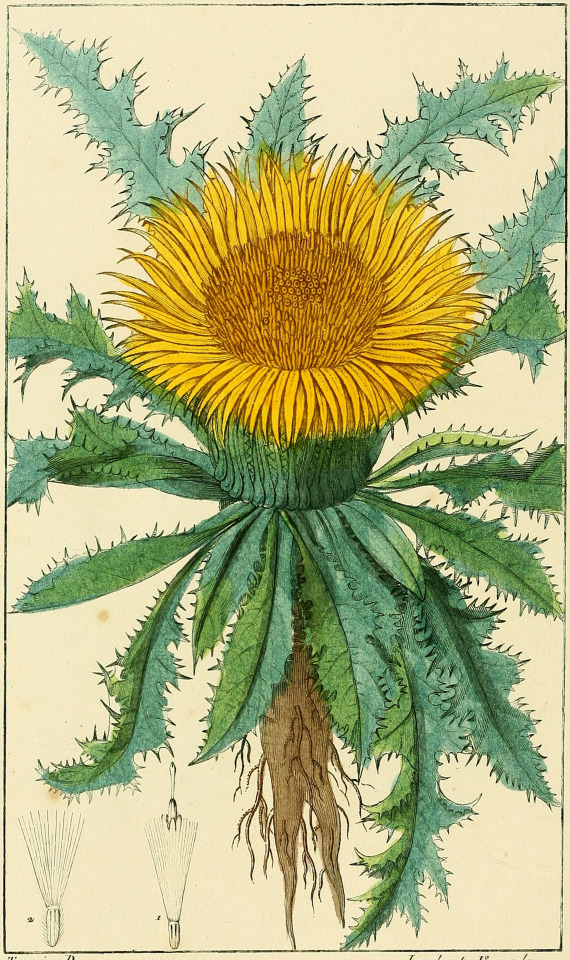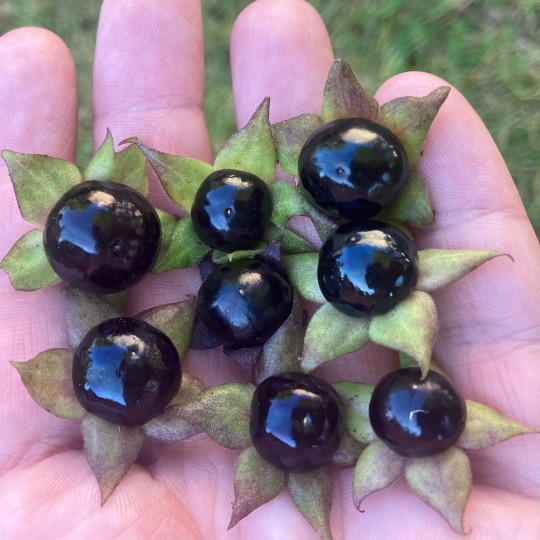#medicinal plants
Text




strangely shaped roots
in a book of medicinal plants, bavaria, c. 1520-1530
source: Munich, BSB, Cod.icon. 26, fol. 18v, 15v, 46v and 60v
#none of these are mandrakes#16th century#herbal#medicinal plants#roots#plants#illuminated manuscript
908 notes
·
View notes
Photo

Medicinal Plant Map of the United States, 1932.
2K notes
·
View notes
Text

A Handbook of Native American Herbs
#american indians#indigenous peoples#herbs#herbalism#botany#ethnobotany#medicinal plants#herbology#nature#natural medicine#shamanism#health and fitness#alternative therapies#books#🌱#📚
87 notes
·
View notes
Text

Snow Lotus near Mount Kailash Tibet. This white, cottony flowers are popular ingredients for Tibetan medicines for ailments ranging from rheumatism to what's called "women's diseases."
#snow lotus#medicinal plants#flowers#Tibet#nature#mountains#Mount Kailash#travel#cliffs#plants#botany
205 notes
·
View notes
Text

Did you know North America has a native lotus? Nelumbo lutea or yellow lotus is one of only two wild lotus species left on the planet. This prehistoric giant produces the largest flower in North America - the size of your head! The leaves average two feet across. It grows from the Great Lakes down to Central America and the Caribbean. It is edible, medicinal, mildly poisonous, and mildly psychoactive. Many Native American tribes believed it had mystical powers.
More info:
• Native American Ethnobotany Database
• Plants for a Future Database
• Wikipedia
Photo from Wikimedia Commons
#bane folk#lotus#yellow lotus#american lotus#nelumbo lutea#nelumbonaceae#sacred lotus#ancient plants#prehistoric plants#north america#ethnobotany#poisonous plants#medicinal plants#edible plants#psychoactive plants
209 notes
·
View notes
Text

Carline or Caroline Thistle. Flore médicale. 1833.
Internet Archive
#botanical illustration#flowers#medicinal plants#yellow#carline#thistle#nemfrog#1833#19th century#1k
1K notes
·
View notes
Text

Pepo fructu parvo, Pyriformi. Cucurbita aspera Pyriformis, parva = Zucca = Citrouille. Pumpkin (1772 - 1793) by Giorgio Bonelli.
Published by Sumptibus Bouchard et Gravier.
Image and text information courtesy NYPL Digital Collection.
89 notes
·
View notes
Text

y’all know what this is?!
it is a clump of jewelweed seedlings!
common jewelweed (impatiens capensis) is native to north america and likes to grow along waterways. in the summertime she grows lovely little orange flowers.
but my favorite thing about her is her sap! it’s great for topical use on irritated skin. i make salves out of it and other happy-skin plants every summer. AND anD if you apply the sap to an area of skin that’s been exposed to poison ivy, it can prevent the rash from developing.
OMG there’s a poison ivy preventative!? well. . . no. this is a more of a “i am in the middle of the woods and have no soap and water but i DO have this plant” situation.
the thing is, you have to have to apply the jewelweed sap almost immediately after exposure to urushiol (the itchy juice in poison ivy), and if you’ve been in contact with poison ivy for more than a few minutes – which most people are because they don’t recognize/notice it – then it’s DEF not going to work. urushiol is absorbed by the skin too fast.
it’s still a cool plant and it DOES reduce itchiness and irritation from dermatitis and bug bites. 🦟
#plants#plant identification#jewelweed#impatiens capensis#us native plants#plant facts#cool plants#medicinal plants#wildcraft#my photos
44 notes
·
View notes
Text

Tall Oregon Grape..and friend..
167 notes
·
View notes
Text

Blithe
Watercolor On Black Paper
2022, 10"x 14"
Forsythia
#art#nature#spring#flowers#painting#watercolor#artists on tumblr#floral#minimalism#petals#yellow#medicinal plants#plants#garden#botany#yellow flowers#gold#artist#nail art#original art#artwork#botanical#botanical art#cottagecore#cottagecore aesthetic#cottagecore art
73 notes
·
View notes
Text
the ghostly pipes have started springing up.

97 notes
·
View notes
Text



Golden Angel Trumpet. The bees are in love.
68 notes
·
View notes
Text
A beginner guide to tea blending 🌿
⚠️This is meant to be a simple guide based on my own research and experience, by all means, educate yourself further and double check everything before proceeding!⚠️
First, define your intention or goal for this blend: what medicinal properties do you want to extract from these plants? You should know the medicinal value and effects of each plant separately before trying them out together and finding out how they interact with each other. Similarly, taste all the herbs separately before putting them together to get a better tasting blend.
You’ll have to find a good balance between:
the right dosage of each herb to get their medicinal value,
the taste of said herbs to your liking,
the right dosage to avoid any possible side effects.
The herbs that cause the main desired effect should take up to 70% of the blend.
One type of effect can be based on which system you want to work in (if the herbs all have similar positive effects on immune, circulatory, digestive, or other systems, like for example calming nerves or easing digestion). The other would be a nourishing effect (if the effects on each system cancel each other and thus you’re only taking in the nutrients, like minerals and vitamins, of the herb). The first kind would all have herbs that work together towards a common goal, the second would have effects that counteract each other so you only absorb their nutrients.
Then you’ll have supporting herbs, up to your 20%, that either boost the good medicine, and/or relief possible side effects of the main herbs.
Depending on the effects each plant has on your body, you’ll want them to boost each other or counteract each other. Also take into account if it’s an overall cooling or warming effect, boosting or slowing down metabolism, if it dries or moistens the tissues with minerals and fluids, and whether it’s relaxing or constricting/toning in tissues aswell.
Last should be possible catalysts. These are optional, but recommended. That would be up to 10% of stimulant herbs that boost metabolism or enhance the overall effects of the others, to really get all the good stuff into your body.
Some good examples of catalysts are ginger root, cayenne or licorice root, but be careful with licorice as it can be toxic in high amounts!
To give you an example of how I’d put everything into practice: if my goal is to make a tea blend that’s toning, rich in minerals and vitamins and strengthens the immune system, I’d use 5 parts stinging nettle, 2 parts lemon balm (for the main effects), 2 parts thyme (supporting), and 1 part ginger root (catalyst), then sweeten to taste. Parts can be grams, teaspoons, or smaller measures, depending on how much blend you want to prepare. If you’re going to try this blend, do this exercise: research each plant, it’s medicinal value and side effects, and you’ll find out why I put them together!
Also, I personally love the taste of stinging nettle, yet someone else may prefer to use 5 parts of lemon balm and 2 parts of stinging nettle instead and get a slightly different result, more soothing to the nervous system, try it for yourself and always check for the effects and right dosages. I normally measure each part as grams, and this formula gives me around 2-3 liters of infusion, depending on how strong you make it. That is, using dry herbs, if you’re using fresh plant material you’ll need more grams. Normally 1 teaspoon of dry herb equals 1 tablespoon of fresh herb, or 1 part dried equals 3 parts fresh, but there may be slight differences between each plant depending on how much water it contains.
Finally, write everything down! The formula, how it worked for you and what it tastes like.
Thanks for reading ♡

#herbalism#rootwork#black herbalist#native herbalist#indigenous herbalism#indigenous herbalist#tea blending#beginner guide#herbalism 101#tea 101#tea blends#tea blend 101#medicinal teas#medicinal herbs#medicinal plants#green witch#green witchcraft#green magic#curanderismo#cottagecore#goblincore
357 notes
·
View notes
Text
Happy shoutout to my childhood self who was always putting some petals, leaves, dirt and stones in a pot making a magic potion. She was right. If she had the knowledge I have now, she would have been over the moon. She only lacked a person to teach her that:
Yarrow mixed with hot water will make a potion against stomach-ache
Lemon balm leaves and pine needles mixed with hot water will make a potion that makes sad and distress go away
Basil leaves mixed with hot water will make a potion against headache
Nettle mixed with hot water will give power, clarity and calcium to the drinker
Mint leaves mixed with hot water will soothe stomach spasms
Linden flowers mixed with hot water will become a cold medicine
Chamomile with hot water makes a sleepy potion
Elderberry flowers mixed with hot water will become a cold medicine
Elderberries if mixed and cooked, powerful anti-flu and anti-cold medicine
Violet leaves mixed with hot water will give anti-fever medicine, and cures sore throat
Blackberry leaves mixed with hot water will make an anti-diarrhea potion
Sage mixed with hot water will help fight bacteria
Rose petals left in cold water in the sun will create sweet-smelling potion that lifts the mood of the drinker
and she’d be so proud to make actual functioning potions. Herbal tea is a witchy power.
#herbalism#medicinal plants#medicinal teas#herbs#self sustainable#self grown medicine#foraged medicine#plant medicine#these are all teas btw#except eldeberry syrup
785 notes
·
View notes
Text

Found and Photographed at a Fungi Festival in Ohio.
I believe these are Oysterlings, more specifically Bitter oysterlings.
Learn more about them below the cut!
Growing on decaying wood, these mushrooms are very interesting with their bioluminescent properties. Glowing green for days (the green only visible in the dark)
Medicinally, bitter Oysterlings have been used in traditional Chinese medicine as a topical substance to stop bleeding, or ingested as a "violent purgative"
Edibility: inedible
Rarity: common
Genus: Panellus
Regions: East Asia, Australia, Europe, & North America
Please do your own research, I am an enthusiast not a scientist. I'm here to share and have fun.
All photographs taken by me: Toast Loafley/Juno S.
#mushrooms#wild fungi#fungi#ohio#photography#nature#nature photography#mushroom identification#medicinal plants#ToastLoafley
43 notes
·
View notes
Text

Atropa belladonna berries freshly picked from my poison garden. So sweet, so juicy, so deadly. I’ll be drying them and saving the seeds as belladonna seeds and live plants can be pricy.
#bane folk#atropa belladonna#belladonna#deadly nightshade#poisonous plants#medicinal plants#psychoactive plants#poison garden
221 notes
·
View notes